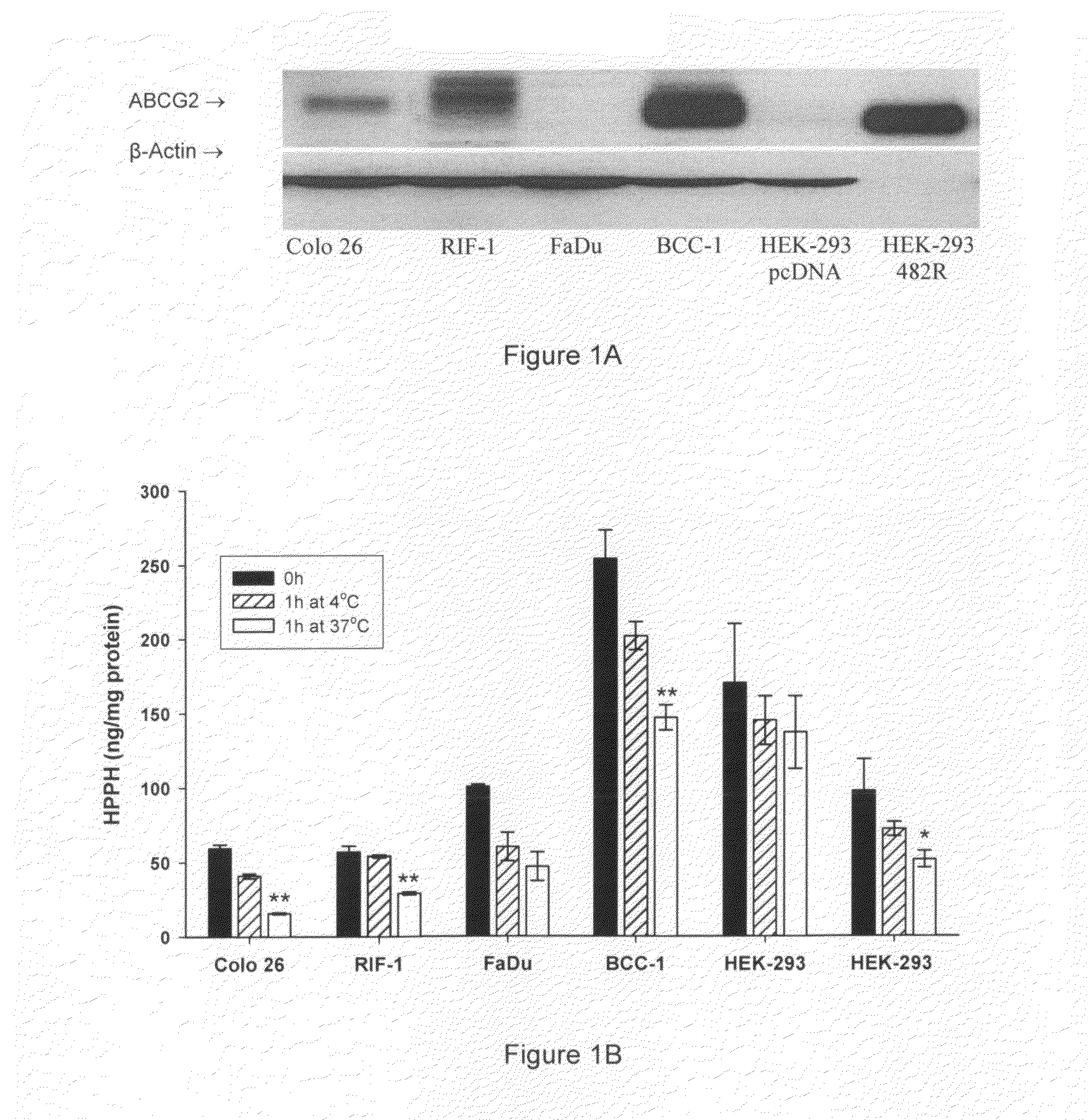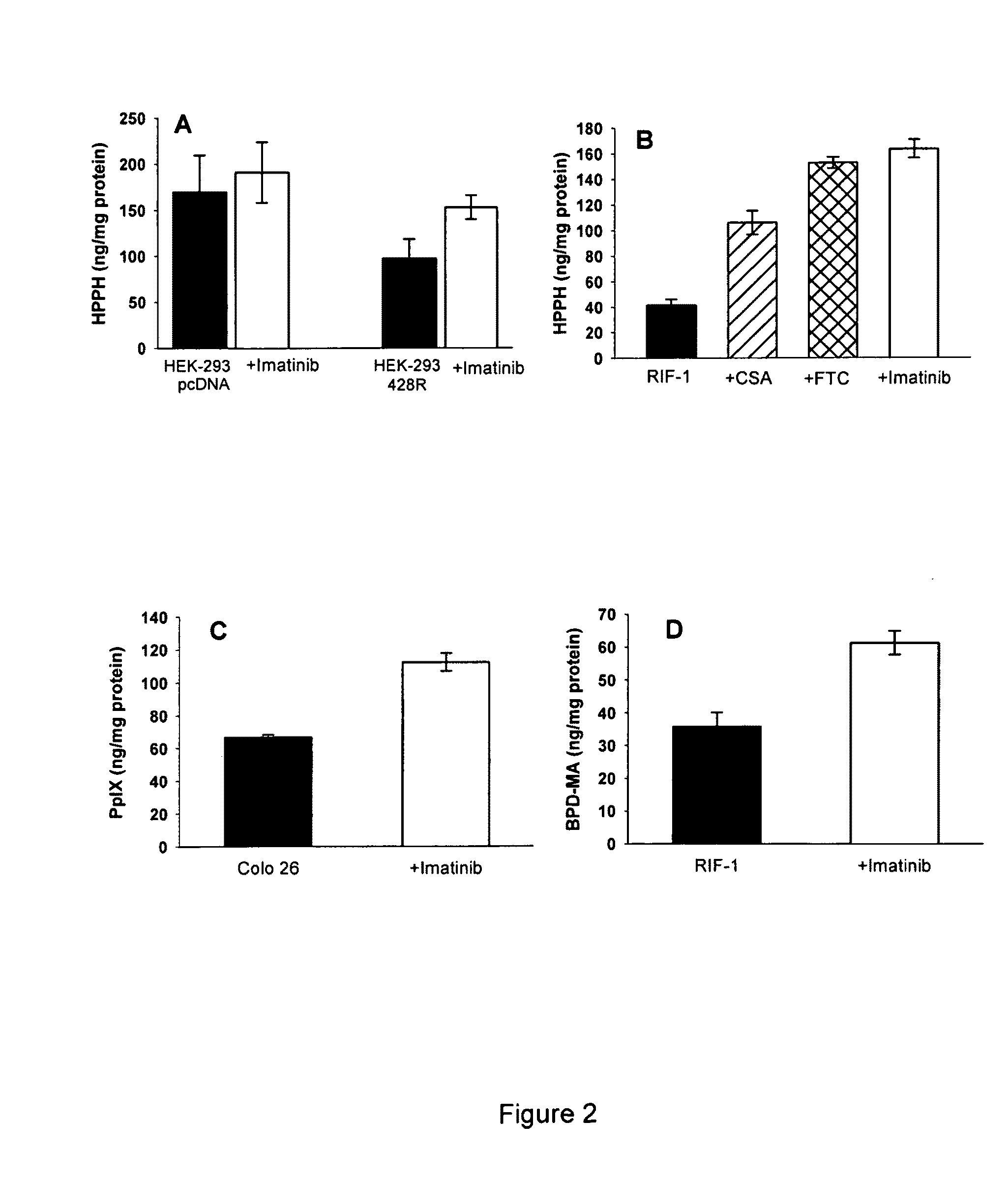Method for Enhancing Pdt Efficacy Using a Tyrosine Kinase Inhibitor
a tyrosine kinase inhibitor and pdt technology, applied in the direction of biocide, heterocyclic compound active ingredients, drug compositions, etc., can solve the problem of reducing the efficacy of pdt using such photosensitizers
- Summary
- Abstract
- Description
- Claims
- Application Information
AI Technical Summary
Benefits of technology
Problems solved by technology
Method used
Image
Examples
Embodiment Construction
[0022]ABCG2 protein is an ATP-binding cassette protein (known as a breast cancer resistance protein) that is a 655 amino acid peptide that effluxes some of the photosensitizers used in photodynamic therapy (PDT) against hyerproliferative tissue such as tumors, and thus reduces efficacy of photodynamic therapy (PDT) using such photosensitizers. This protein has been known for a number of years. Details concerning this protein can be found in Stand et al., International Journal of Biochemistry and Cell Biology 37 (2005) pp 720-725, incorporated herein by reference as background art.
[0023]As discussed above, tyrosine kinase inhibitors (TKI's) were investigated with respect to their effect upon improvement of PDT effect against tumor cell lines expressing ABCG2. While the primary TKI investigated was imatinab mesylate, it is understood that the invention includes the use of other tyrosine kinase inhibitors. Examples of such tyrosine kinase inhibitors include, but are not limited to: erl...
PUM
| Property | Measurement | Unit |
|---|---|---|
| body weight | aaaaa | aaaaa |
| light absorbance frequency | aaaaa | aaaaa |
| covalent | aaaaa | aaaaa |
Abstract
Description
Claims
Application Information
 Login to View More
Login to View More - R&D
- Intellectual Property
- Life Sciences
- Materials
- Tech Scout
- Unparalleled Data Quality
- Higher Quality Content
- 60% Fewer Hallucinations
Browse by: Latest US Patents, China's latest patents, Technical Efficacy Thesaurus, Application Domain, Technology Topic, Popular Technical Reports.
© 2025 PatSnap. All rights reserved.Legal|Privacy policy|Modern Slavery Act Transparency Statement|Sitemap|About US| Contact US: help@patsnap.com



